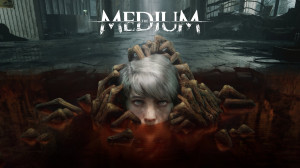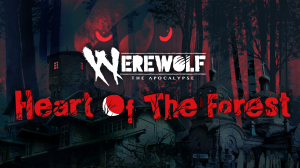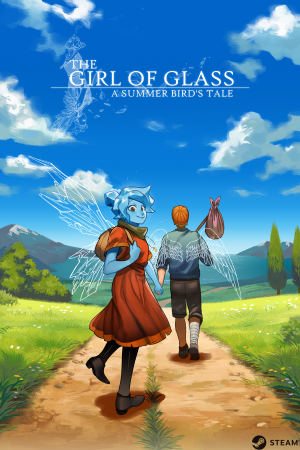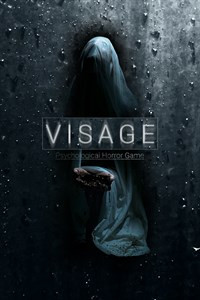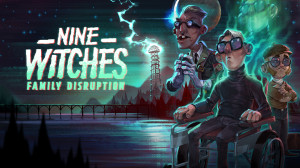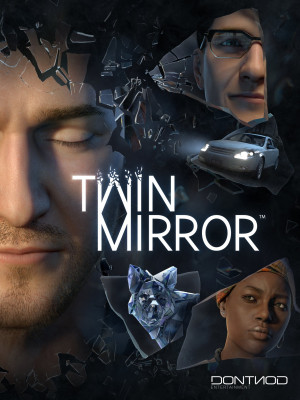Review for The Medium

For in that sleep of death, what dreams may come
When we have shuffled off this mortal coil
Must give us pause...
Shakespeare, not surprisingly, had it right. The dread of something after death has always lurked at the back of human consciousness, and it’s no stretch to say that nearly everyone has dreamed of one day being able to glimpse what lies beyond the veil. The medium, then—a living soul who can connect with the world of the dead—is among the oldest of human archetypes, and it’s a role that most of us have imagined taking on ourselves, if only idly. Bloober Team’s aptly titled horror adventure The Medium gives you that chance, and while its vision of the afterlife is so effectively harrowing that you’ll likely be cured of any such real-life ambitions, its confused, disjointed story never manages to live up to those scares.
The Medium casts you as Marianne, a young Polish woman raised in foster care with no memory of her early childhood. As a medium, Marianne can move through the spirit world, a disturbing purgatory where restless souls wander when they’re unable to cross over to their final rest. Marianne has made it her life’s work to help spirits trapped in the other realm find peace and move on to whatever might await them. Now, wracked with grief after the death of her elderly foster father, Marianne receives a shocking phone call from a stranger named Thomas, who not only knows who she is and what she can do, but also about a recurring dream that has plagued her since childhood—and which she’s never described to anyone. He says he’ll give her answers if she’ll meet him at the former Niwa Workers’ Resort, an abandoned Soviet-era vacation spot that closed down when a staff member massacred a number of guests. Lacking any other way to uncover her past, Marianne agrees.
Thomas, unfortunately, is nowhere to be seen when she arrives; instead she’s greeted by the spirit of a young girl called “Sadness,” who has fractured memories of being alive when the resort was active. Sadness’s recollections are too disjointed to be much help, but she thinks she might know Thomas and where to find him. While searching, however, Marianne finds herself targeted by a ravenous nightmare creature from the spirit world that hungers to use her abilities for its own ends. Marianne will have to navigate the resort in both the physical and spirit worlds in order to find Thomas, evade the monster that’s set its sights on her, and solve the mysteries of her past and its connection to Niwa Resort.
You control Marianne in third-person perspective; on PC the game supports both keyboard and gamepad, but it was designed with the latter in mind. (A PC/Xbox exclusive, The Medium’s in-game prompts are all based on the Xbox controller’s layout; if you use another gamepad, be prepared to look up the orientation of the various buttons it references.) Controls are simple, with the joystick/WASD keys controlling movement and a dedicated button for interacting with hotspots. These are easily found, as small white dots spring up automatically when Marianne approaches and grow into interaction prompts when she stands close by. One button allows you to run; another will toggle between normal movement and sneaking, which you’ll have to do to avoid alerting the spirit world’s nastier residents to your presence. In especially tense moments, yet another button lets you hold your breath, making you harder to detect. (Oddly, there appears to be no time limit on this ability.)
The game’s most novel mechanic revolves around Marianne’s ability to walk in two worlds at once. In the normal course of things, she moves through the real world like any of us, but there are times when her consciousness splits, so that she feels herself simultaneously present in both the physical and spirit realms. Functionally this causes the screen to split in two, with one half showing Marianne’s corporeal self in the mortal world and the other her pallid, white-haired avatar in the spirit world. Landscapes are laid out almost identically across both planes, so that the two Mariannes move in tandem. Despite the two realms’ very different aesthetics—more on that in a bit—the Niwa has the same floor plan across both. There are occasional variations, though, as what happens in one world doesn’t necessarily transfer automatically into the other; if a door is open in the spirit world but locked in the real one, Marianne can’t go through until both are open.
She can work around this via controlled out-of-body experiences. This allows you to move her through the spirit realm for a short time while her physical body stays put. (The screen remains split, but the physical half shrinks and blurs as Marianne meditates so you can better focus on the spirit world.) If she stays that way for too long, her spirit form will dissolve into the aether, which necessitates returning quickly. Her spirit form begins to dissipate the longer a projection goes on, so that you can gauge the time you have left by how solid Marianne appears on screen. Luckily it only requires a single button-press to end an out-of-body jaunt, just as it does to start one; as soon as it’s over, Marianne’s spirit form will jump back to the same location as her physical body. Midway through she gains the ability to travel fully into the spirit realm by touching certain mirrors, with no time limit on how long she can stay; how this works isn't really explained, but it leads to several long stretches where you're absent from the physical plane.
Marianne has a few other tricks that help her navigate both worlds safely, each controlled by a different button. She’s able to focus and sense traces of spirit energy in the real world, which allows her both to find hidden objects (which show up via thin white outlines) and to access the lingering memories of people who were here before her (which appear as either shining white smudges that trigger ghostly audio sequences or as clouds of shimmering fragments, which you can reassemble to watch the memory play out). She can also absorb energy from wells of power scattered throughout the spirit world; this produces a spiral of white light around her right arm, which she can use either to produce a defensive barrier or to discharge a sudden blast. The latter ability is useful both for scaring off hostile beings and for causing a power surge in electrical equipment (which carries over into the real world).
You’ll be glad of these powers, too, because the spirit world is anything but welcoming to the living. This is where The Medium grants itself free rein to indulge its every urge to shock, disturb and horrify, and where it—ironically—comes roaring to life. One look into the other realm is all you’ll need to understand why Marianne wants so badly to help wayward souls move on. This is a dark, dingy, ugly dimension full of stacked bones, swarming bugs, crawling fungus and disembodied fleshy tissue that grows and spreads across surfaces. Misshapen humanoid shapes huddle and writhe in the shadows, and the light casts everything in shades of blue and sickly yellow-brown. The air is often thick with the hungry rumblings of unseen beasts, and the understated score helps emphasize the mingled dread and melancholy of the forgotten souls who wander here. The restless dead you encounter wear eerie porcelain masks where their faces used to be, and while they’re able to speak they’re unsure of where or even who they are. No one is here because they want to be—not even the monsters.
And make no mistake: there are monsters in the dark. They all sport fantastically creative designs, from a bloated multi-armed giant to a hound seemingly cobbled out of discarded body parts. The most prominent antagonist, though, is the aforementioned spirit creature who sets its sights on Marianne. Everything about this beast—called the Maw in the credits, but never named in dialogue that I heard—is high-octane, turbocharged rocket fuel for pure screaming panic. Impossibly tall, eyeless, with tattered wings and a gait like a tortured ballerina, the Maw is unique among spectral beings in its ability to cross from the spirit world to hunt in the physical one. Doing so renders it invisible but also blind—at home it doesn’t need eyes to see—so that it has to track Marianne by sound. This leads to several harrowing cat-and-mouse sequences on the physical plane where you’ll have to sneak while using Marianne's hidden-object detection to get a sense of your unseen pursuer's position. At other times it will come shrieking after you, forcing you to run like hell through the spirit world’s fetid corridors until it loses your scent. Long forced to wander the shadows alone, the Maw has a penchant for muttering darkly to itself and rambling about its hunger and violent desires. It’s voiced with horrific, lunatic anguish by the brilliant Troy Baker, whose performance beggars description. Once the Maw was introduced, I didn’t feel safe again for the rest of the game; it could be anywhere, and I wouldn’t see it coming.
It’s disappointing, then, that such well-designed and realized horrors belong to a story that is neither. What starts out strong, with a compelling central mystery and an interesting setting that motivates further exploration, quickly falls prey to bizarre digressions and plot threads that don’t lead anywhere. Large chunks of the game are spent in flashbacks that Marianne experiences psychically; these sequences grant you control of another medium from the Niwa’s past, whose abilities let him enter others’ minds and explore the surreal landscapes of their psyches to uncover their secrets.
These sequences are enjoyable in and of themselves and feature numerous creepy moments, but their length means a good portion of the game’s twelve-hour playtime is spent exploring the inner lives of ancillary characters with little connection to Marianne, and whose backstories, once discovered, are never referenced again. Exploring the mind of one character yields revelations that quickly prove irrelevant to anything in the game, and the story beat they’re meant to introduce could have been set up much more quickly. Spending this much time with other characters before returning to Marianne means that it becomes difficult to keep straight who corresponds to which plot development, and as more pieces fall into place it becomes increasingly obvious that they don’t all fit together. By the time the game was done, I felt like I only half-understood the order of events, and I had even less of a grasp on the reasons for them.
None of this is helped by a mid-game subplot involving the spirit of a man who, it turns out, was secretly a monstrous child predator. The game never seems to know quite what to do with this development, apparently introducing it just for the sake of presenting one of its villains with a suitably appalling origin story. Little time is spent on the monumental gravity of this discovery, with characters never even managing to state it outright. Despite the clear and obvious implication of sexual abuse, the game can’t muster the nerve to describe it as such, settling instead for vague references to his having “hurt” a child with whom he was “obsessed.” Considering how much of the game’s narrative flows from that horrific act, it feels dishonest to dance around it so gracelessly, especially when—even though both characters are central to the story—so much more time is dedicated to exploring the offender’s backstory than his victim’s.
Another problem is Marianne herself, whose character doesn’t develop much beyond her role as a player stand-in. Despite her being the story’s nominal center, I never got a good sense of who she was outside of her abilities. She provides exposition, and she constantly reacts to events around her, but besides her grief at her foster father’s death and her immediate compassion toward lost souls like Sadness, the game doesn’t give her much of a personality. Kelly Burke’s voice performance renders Marianne perpetually even-keeled, even in moments of great distress; despite all the trauma, filth and literal entrails she makes her way through, Marianne’s tone rarely rises above sounding a bit put out. This might work if the central events weren’t tied so directly to her life—presumably a medium develops a thick skin regarding the spirit world—but she isn’t supposed to be a disinterested observer here; she’s uncovering upsetting and even traumatic truths about things she thought she understood, and that doesn’t come through in her portrayal.
The gameplay, at least, is more consistently rewarding. There are some novel puzzles involving creative use of Marianne’s ability to be more or less in two places at once, and which force you to repeatedly reconsider how you think of her two “selves.” In some places these function essentially as two halves of a whole, with each going inexorably where the other leads, while in others you’ll have to use out-of-body projection to position them as you would separate people. What inventory puzzles there are have relatively straightforward solutions, usually involving a search for a missing object or a tool you know you’ll need. Unfortunately there are also obstacles that seem placed just for the sake of padding, like the numerous chained doors or fleshy spirit walls that Marianne has to cut through. The first time you encounter one of these, the search for the necessary bolt cutters or razorblade feels like an appropriate puzzle; once you have those tools, though, there’s no thought or effort required to use them again and again, so that they begin to feel less like a challenge and more like busywork. The same is true of the clouds of ethereal moths you’ll sometimes have to pass through using your spirit shield; once you know what you have to do, there’s nothing interesting about doing it again.
There are multiple ways to die in The Medium, including being caught by a pursuing monster or waiting too long to terminate an out-of-body experience. This adds an extra dimension of urgency when you’re trying to avoid the Maw, but the game’s infrequent autosaves make the process more frustrating than it should be. It’s all well and good to die and be zapped back to the beginning of a chase sequence as punishment, but it’s another issue entirely to have to complete several previously solved puzzles a second or third time. There’s no manual saving, either, so you’re forced to rely on the designated checkpoints; not only does this make dying a huge pain, but it affects your freedom to quit without losing progress.
In one regard, The Medium is an unqualified success: its scares are consistent and effective enough that you’re guaranteed to feel uneasy walking through your house with the lights off afterward. The dual-world mechanic, too, is used to good effect, and some of the puzzles are exceedingly clever. In most other respects, however, the answer is more complicated. If all you’re looking for is a good fright you could certainly do much worse, and the Maw alone is likely worth the price of admission, but the story, characterization and overall gameplay aren’t solid enough to endorse it without reservations.


